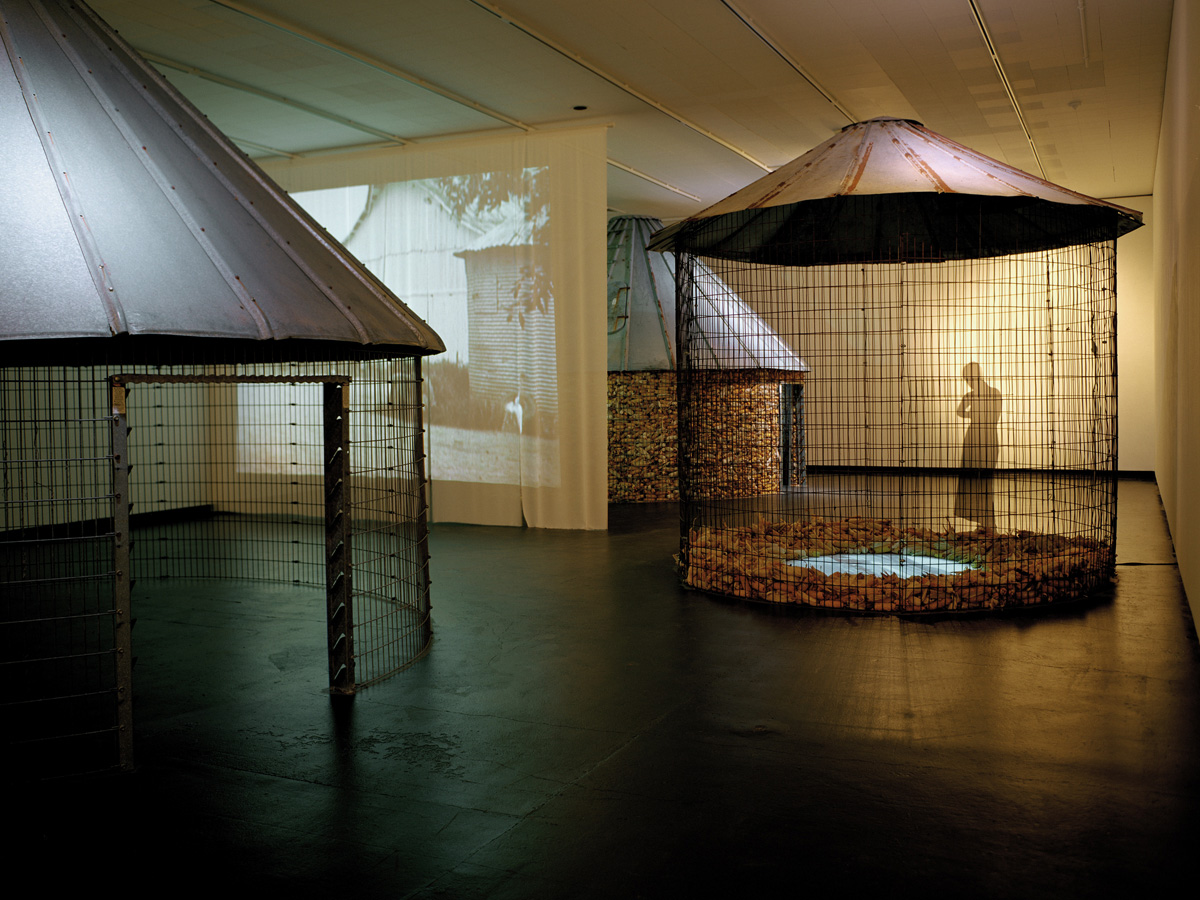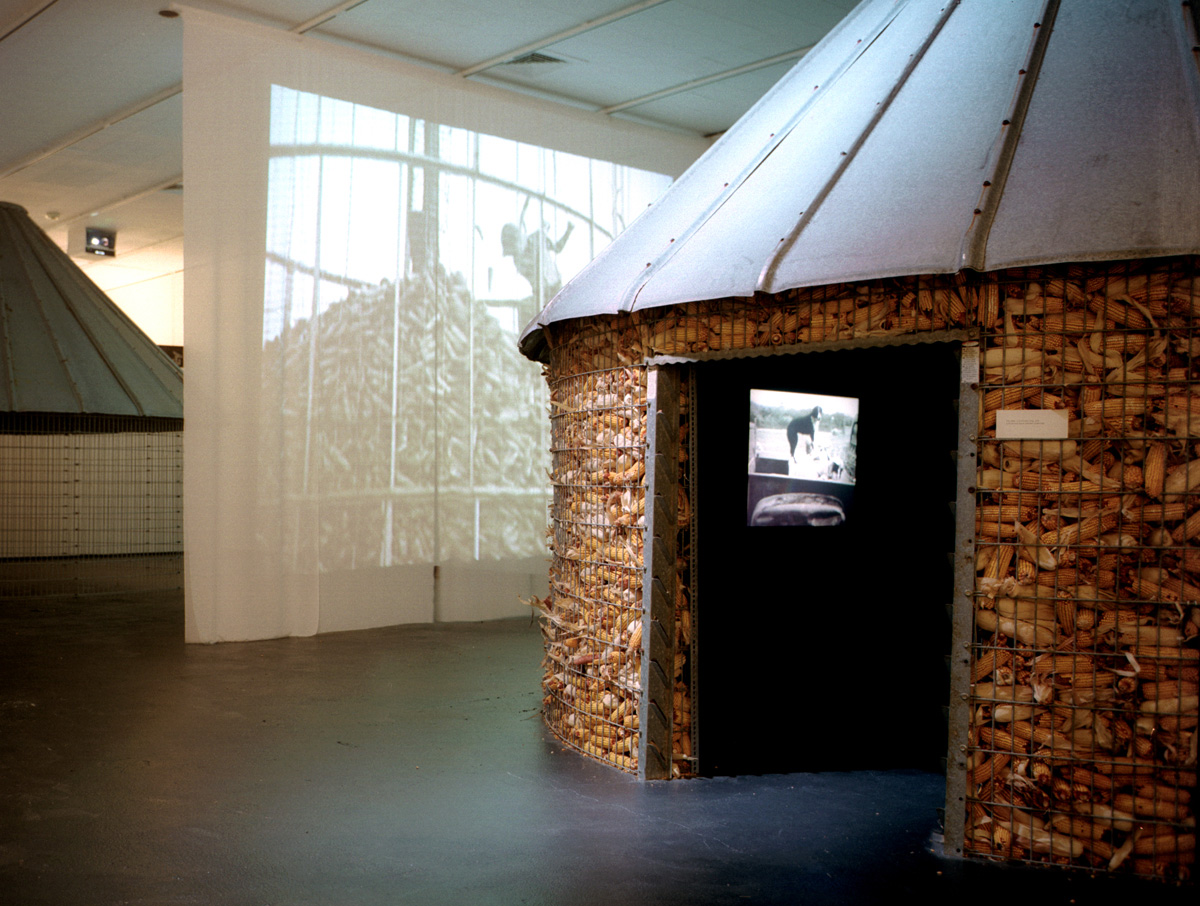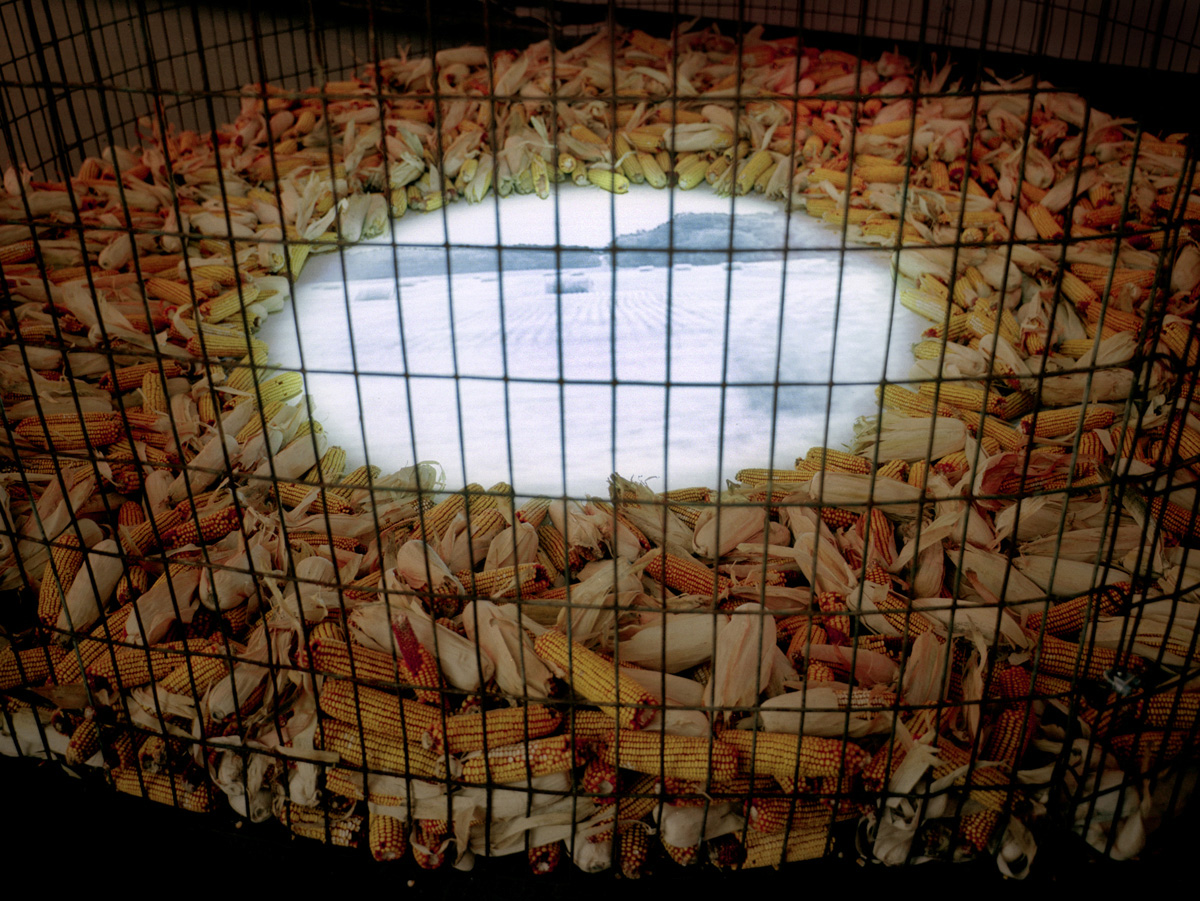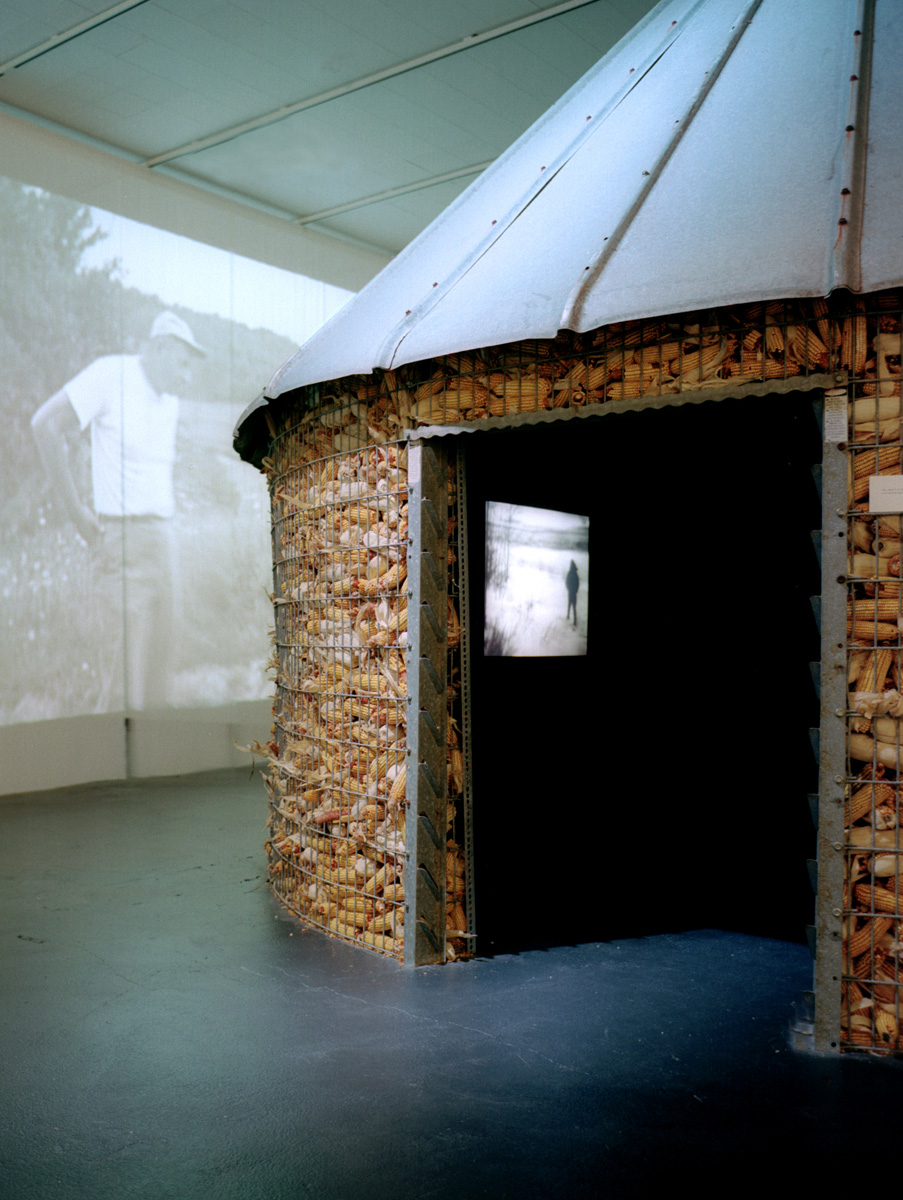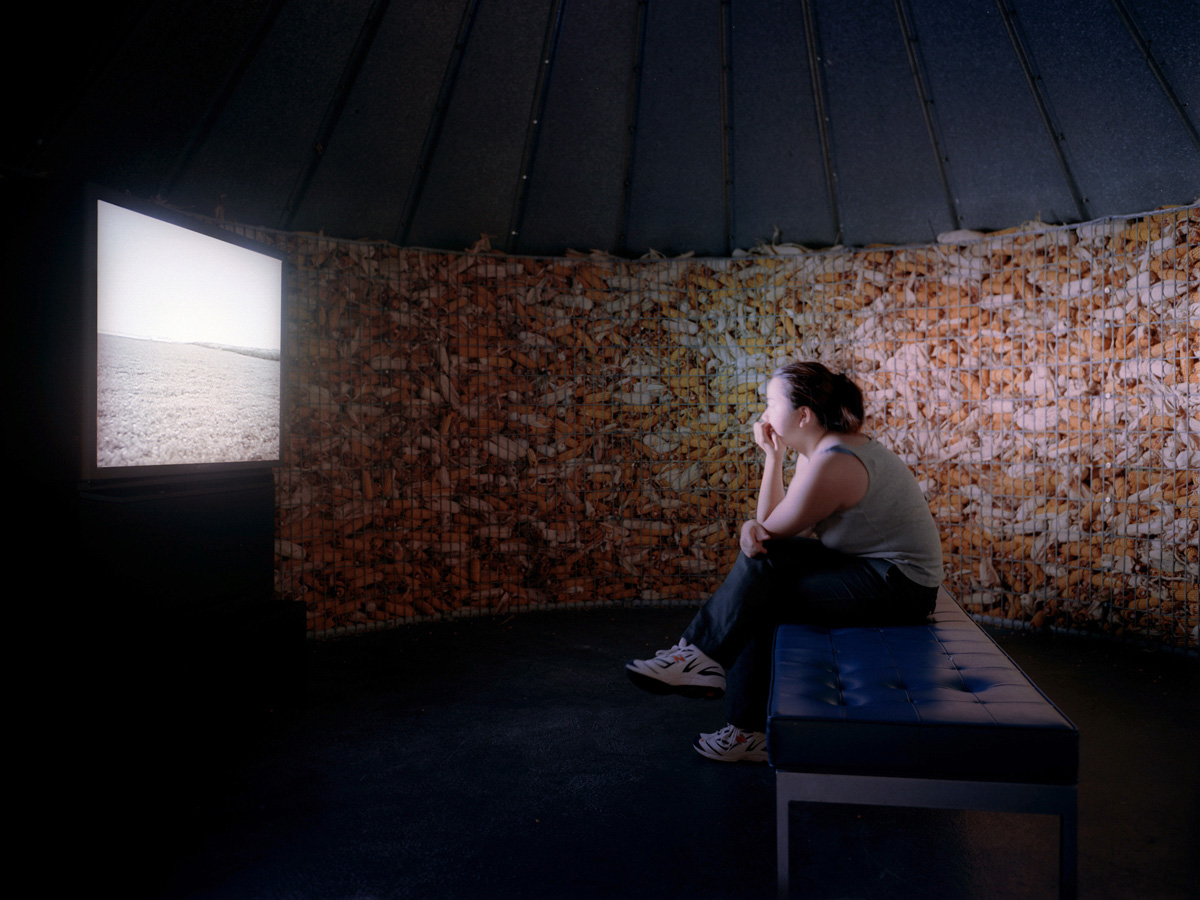Description
Entering the Close to Home installation, 2001, viewers hear the sounds of a farm on a summer day and see two large wire corncribs. Film footage of a farm in the 1950s is fading in and out on a large cloth scrim. The projected images are elusive and fragmented—a man walks into a barn, a woman washes dishes at a sink, a pickup truck drives away. The room has a musty smell from the 2½ tons of feed-corn stored in the corncribs. As the images on the scrim change from day to night and the room gets darker, the ambient sounds change from chirping birds and chickens to crickets and katydids.
Viewers next pass by a circular projection that fills the bottom of a corncrib nearly emptied of its corn. The footage depicts a contemporary rural landscape as seen from a moving car. It begins with a small stream, followed by scenes moving past miles of farmland planted with corn and beans, and eventually the crossing of a large river.
As viewers walk past the circular projection and scrim they encounter a third corncrib, which appears to be full of corn, but has a door they can enter and watch a short film. The film, Along the Pale Blue River, includes characters previously introduced on the scrim. A voice-over narration reveals the story of a woman (Fessler), who is on a journey to find a yearbook picture of the mother she has never met. After watching the film and walking back through the exhibition, the viewers understand the significance of the characters on the scrim, the farmyard they have entered, and the circular projection on the floor that documents the land that separated Fessler and her mother, and the river that always connected them.
Information
Close to Home, installation by Ann Fessler, 2001
Solo exhibition at the Bell Gallery, List Center, Brown University, 2001
Medium: 3 altered corncribs; 2 ½ tons of dry feed-corn; audio composition; two video projections; and a short film Along the Pale Blue River.
Close to Home was exhibited in 2003 as part of the Everlasting: Baltimore installation, which paired Fessler’s work about her search for her mother with the stories of mothers who lost children to adoption.
Curator's Statement
Ann Fessler’s Close to Home evokes the sights and sounds of the rural Midwest, as it tells the autobiographical tale of a young girl who grew up in a river community and was later propelled—by coincidence, dreams, and fate—to the hometown of her biological mother at the headwaters of the same river.
Premiering at the Bell Gallery, the multi-media installation is the latest in a series of works in which the artist addresses issues related to adoption. Fessler’s greatest strength may be her ability to comment on highly personal subjects without falling into sentimentality. The videos are poignant and touching, but her intelligence, critical distance, and well-honed sense of humor save them from sentimentality.
Upon entering Close to Home, viewers encounter two large wire corncribs and a wall-size projection on a semi-transparent scrim. The projected images, black and white film footage of farm life in the early 1950s, are accompanied by a sound track of ambient noises—birds, wind, rain—and a musty barnyard smell that emanates from (2-1/2 tons of) dried feed corn. This evocation of the American Midwest comes into clearer focus when viewers discover a third corncrib, behind the scrim, at the rear of the gallery. Seemingly filled with corn, and yet open inside, the crib serves as a viewing area for a nine-minute long video. The various elements of the installation come together with the narrative of a young girl born outside of marriage in the 1950s.
Fessler’s wit is evident in all her works. Whether she is sharing a childhood fantasy of being adopted by Roy Rogers and Dale Evans or examining her relationship with her mother—as she does in Cliff & Hazel, her poignant 1999 film—the artist maintains a critical distance. She presents her personal experiences as examples of universal issues.
—Jo-Ann Conklin, Director
David Winton Bell Gallery, List Art Center, Brown University


